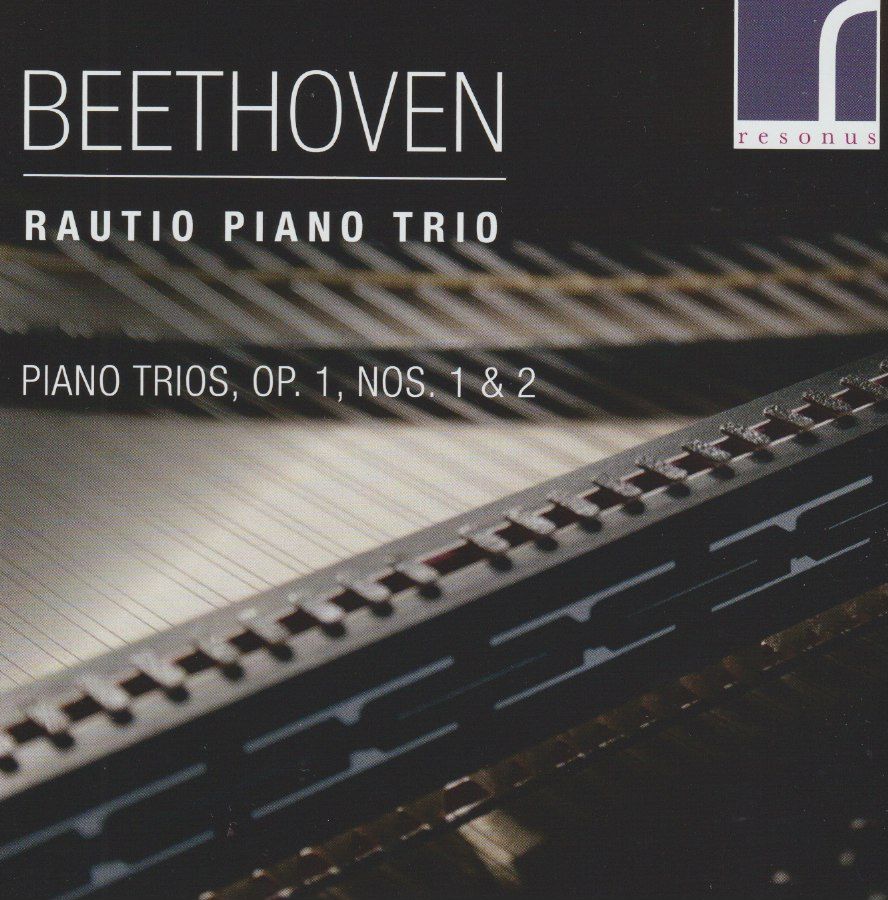What was Beethoven's Op. 1?
A wonderful release; future instalments are eagerly awaited

The period instrument Rautio Piano Trio has an ambitious project on the go: not just that this ist he first volume of a complete cycle of Beethoven Piano Trios, recorded on period instruments, but a wider charting of the evolution of the piano trio via J. C. and C. P. E. Bachs, Mozart and Haydn.
Most pianists at least will be aware of Beethoven’s Op. 2 - the ostensible first set of three Piano Sonatas (we know better on Classical Explorer as we've mentioned the Kurfürstin Sonatas before) . Beethoven's Op. 1 was actually a set of three piano trios, first performed in 1793 at he home of Prince Karl Lichnowsky. We hear them on clearly a fine set of instruments with just as fine a set of instrumentalists: the violin, played by Jane Gordon, is a Giovanni Battista Rogeri (Brescia, c. 1630); the cello, played by Vctoria Simonsen, a Giovanni Grancino (MIlan, 1687) and the fortepiano, played by Jan Rautio, is after Walter & Sohn, 1805 with a fiive and a half octave range with sustai, moderator and una corda knee levers.
The three piano trios are nicely contrasted, and on this disc we hear the first two, No. 1 in E flat (later the key of the “Eroica” Symphony) and No. 2 in G-Major (a far sunnier key)
Even though the first Trio is in C minor (key of Beethoven's own manner of extreme Sturn und Drang), it contains moments of gentilité that place it close to Beethoven's teacher, Haydn - and we hear thet all the more in a period performance, coupled with an overall rhyhmic momentum that is all Beethoven; as is the development section (which reminds me of the first movement development section of the F-Minor Piano Sonata, Op. 2/1):
The slow movement is an Adagio cantabile, and the Rautio Trio certainly take up the ‘cantabile’ aspect - Jan Rautio's sense of line on a fortepiano is remarkable, in fact. Worth noting that the balance using a fortepiano and period strings is perfect, and presumably more achievable than if performed on a modern concert grand ...
What is impressive about the Rautio Piano Trio's third movement is the way they work with Beethoven's use of gseture: listen to how those descending scales make a real rhetorical mark. Notice also that Beethoven marks this a Scherzo and not a Minuet/Menuet, and how this performance is accordingly full of internal fire:
The finale scampers beautifully herewith fortepianist Jan Rautio's fingers in dazzling form. And how the three instruments throw about the motifs like they are playing catch! Surely this is exactly what Beethoven wanted:
The move to G-Major ushers in a whole new world. While the first trio began with a powerful, “here we are” gesture, with Op. 1/2 we have a slow introduction, an Adagio, powerful, mysterious, that moves absolutely seamlessly in this beautiful performance into the first movement proper, and Allegro vivace:
The second theme of the movement is absolutely delightful, performed with fresh-air abandon by the Rautio Trio - and yet how exact their sense of ensemble is. The Rautio Trio also relish the playfulness of Beethoven's use of silences (as Nigel Simeone points out in his excellent booklet notes, a device beloved of Haydn). I also like the tightness of Rautio's fingerwork here., and the sense of joy all three players bring to the piece, particularly a freshness in discovery of Beethoven's nending invention.
The Largo con espressione second movement takes us to E-Major, and that is far from teh only bold harmonic move on offer here. Beethoven's magic is everywhere apparent, and the Rautio Trio's unhurried way enables us to relish every little slight-of-hand. Do listen to this to the end; the close is a dream, and beautifully executed:
The determination of the scherzo is beautifully projected, but liste to the Haydnesque playfulness of the finale (and how the Rautio Trio take this at a proper Presto, as Beethoven indicates - although you have to dig into the notes to find that, both movements are listed just as 'finale' in the track listing). How well the performers contrast that kittenish play with episodes of Beethovenian fire, too:
The recording, made at London's Henry Wood Hall and Produced, Engineered and Edited by Adam Binks, is beautiful in its sense of perspevtive and the way it projects the variety of tone from all three instruments.
A wonderful release; future instalments are eagerly awaited.
